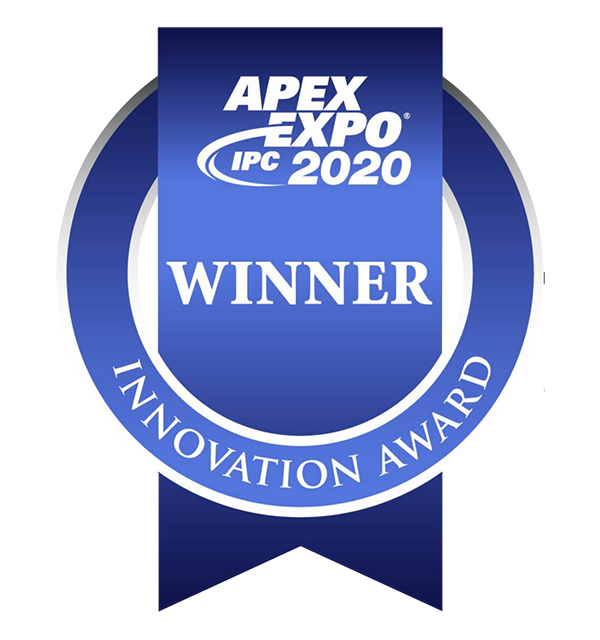Applications, we have adapted our worldwide patented induction technology (InduBond®) for different kinds of printed circuits (PCB) providing numerous benefits for any application.
Rigid Conventional
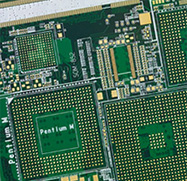
Multilayer Rigid Conventional printed circuits usually have no more than 12 layers, different materials are not usually combined, they are not usually more than 2.2 mm thick and they tend to be manufactured in many panel formats.
Using our InduBond® technology, registration for these circuits adds simplicity and robustness to the process and repeatability and precision to centering. The result is a laminated panel with a large linear distribution of expansion and contraction over the entire surface of the inner layers during the lamination process.
We recommend the InduBond 130N model for this application.
Rigid High Thickness
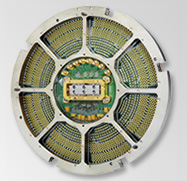
Multilayer Rigid High Thickness circuits generally have a large number of inner layers, (112 - 70) in which many different materials are often combined and sometimes require sequential laminations for some internal cores or layers. They tend to be quite thick, (3 - 10 mm) and there is usually a high density of interconnection (HDI). They are usually communications circuits or test wafers for semiconductors.
When this type of circuit is laminated with several layers of different materials, a great deal of inner tensions are created that make it difficult to register the layers. The InduBond® technology has no limits to the layers or thickness that can be soldered.
Registration for these circuits using our InduBond® technology involves putting anchor points on the panel that give a lot of control over layer registration and at the same time allows for a highly linear expansion and contraction of the layers throughout the entire panel, which substantially improves final registration.
We recommend our Mod. InduBond 130N 6H or Mod. InduBond RFX for this kind of circuits.
Rigid Flex
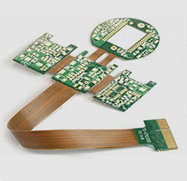
Multilayer Rigid-Flex printed circuits, which are gaining implementation momentum, are printed circuits that combine parts of rigid multilayer circuits connected together with flexible multilayer circuits. This kind of circuit is highly complex because of the numerous phases required for manufacturing it. In general, these circuits have a high density of connections (HDI) and materials with very different dimensional behavior are combined, which makes production difficult.
These circuits usually have a production process with sequential lamination of some of the cores and they are not usually very thick.
We have developed a pioneering technology for this kind of circuit based on InduBond® technology that makes it possible to put soldering points anywhere on the surface of the panel. The goal is to create anchor points near the important areas where you want to contain or control the large expansion differential between the flexible layers and the rigid ones so that connection is not lost.
We recommend our InduBond RFX for this kind of circuits.
Cover Layer

The cover layer is a polyamide that is applied to finish and protect the copper elements of a flexible circuit layer. The process of applying the cover layer is rather delicate because it introduces a dimensional change to the circuit image that has to be closely monitored.
Our induction technology, used in a lamination press that lets the pressure and temperature transmitted to the material be controlled with great precision, and which has high production capacity, is very well suited for this application.
We recommend our InduBond Press model for this kind of application.
Flex
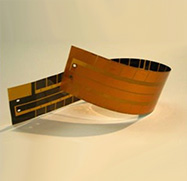
The Flex is a flexible printed circuit that may or may not be multilayer. Polyamide is the material generally used both as a substrate and to finish and protect the circuit`s copper. The process is rather delicate because it introduces a dimensional change to the circuit image that has to be closely monitored.
Multilayer flexible circuits can be registered and soldered using InduBond® technology, which provides a great deal of dimensional control during layer registration.
Likewise, our induction technology, used in a lamination press that lets the pressure and temperature transmitted to the material be controlled with great precision, and which has high production capacity, is highly suitable.
We recommend our InduBond RFX for registration and the InduBond Press for lamination for this kind of circuit.
News & events
Below we show the latest news, recommendations and promotions related to Indubond, access each one of them to read more.
Read moreWinner Innovation Award: InduBond X-Press (category: PCB fabrication), a concept in multilayer press technology utilizing electromagnetic energy to heat stainless steel separator plates
Read moreFrom April 6 to 11, 2024 we will be present at IPC Apex 2024 in Anaheim, California, the reference fair for PCB manufacturers in USA.
Read moreFrom 14 to 17 November 2023 we will present at Productronica in Munich, the reference fair for PCB manufacturers in Europe.


